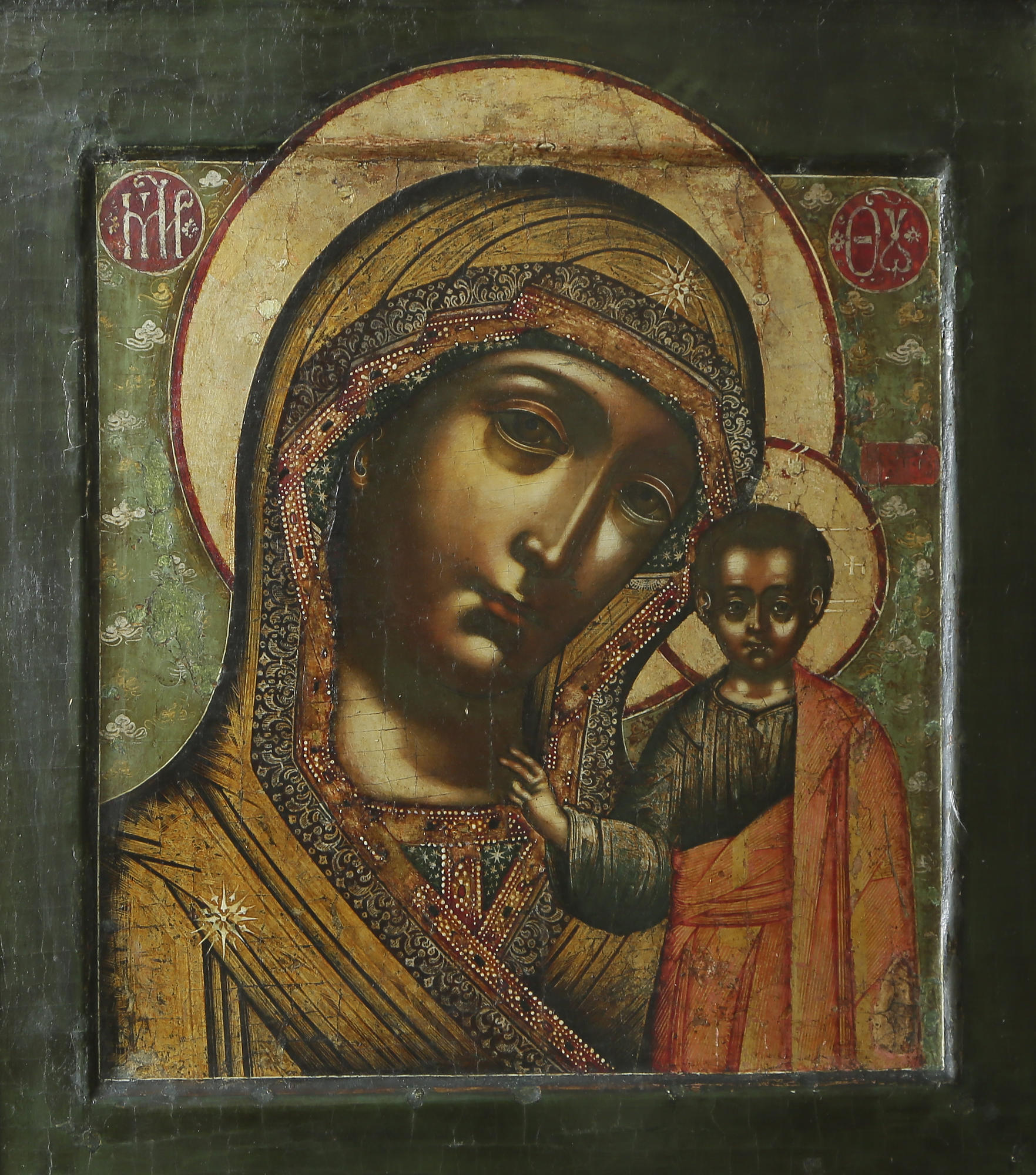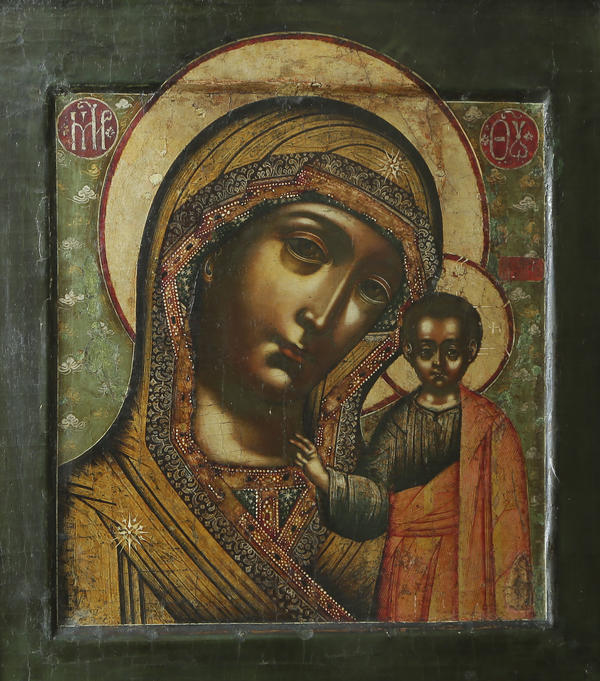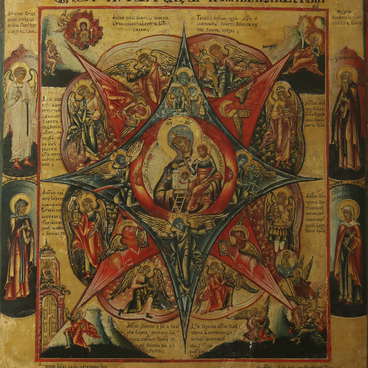Our Lady of Kazan belongs to the Hodegetria iconographic style. In Greek, Hodegetria means 'She who points the Way’. According to the legend, the first Hodegetria was painted by Luke the Evangelist during the lifetime of the Mother of God. Unlike the Eleusa icons (from the Greek word meaning ‘tenderness’ or ‘showing mercy’), which depict the love between the Mother and the Child nestling against her cheek, this icon puts the Son of God in the pivot of the composition. Traditionally, He is represented in full face with His right hand held up in blessing. The Virgin usually points to Christ as the way to salvation. However, we cannot see it in the Lady of Kazan because only the head and shoulders of the Virgin are shown. Another peculiar feature of the Lady of Kazan is that it depicts Christ full length with his left arm covered with draperies.
At the end of the 16th century, Metropolitan Hermogenes compiled the Chronicle of the Appearance and Miracles of the Lady of Kazan. According to the Chronicle, the icon was recovered on some smouldering ruins in Kazan in 1579 by Matrona, a nine-year-old daughter of a streletz (‘shooter’). Soon after, the Kazan nunnery was built at that place to house the icon. During the Times of Troubles, a replica (a copy) of the wonder-working image was brought to Moscow to help Dmitry Pozharsky in the struggle against the Polish occupants.
Most likely, the painter of the icon from the collection of the Primorye Picture Gallery belonged to the Moscow icon-painting school of 1870’s — 80’s. The image is covered with colourful varnishes, while the draperies are bordered with the imitation of gold lace and precious beaded embroidery. The eyes of the Virgin and Jesus are painted in fine detail with semi-transparent irises heightened with touches of gold brown. These artistic techniques together with the warm Ochre colouring suggest that the icon painter could be affiliated with the Armoury Chamber. He could also be a pupil of Simon Ushakov who developed an original style of icon painting, zhivopodobie (‘mimetic representation’) distinguished by more lifelike and realistic depiction of faces and material objects. The craftsmen of the Armoury Chamber who worked together with Ushakov were the first to have adopted the new techniques. By the end of the 17th century, zhivopodobie became common.
At the end of the 16th century, Metropolitan Hermogenes compiled the Chronicle of the Appearance and Miracles of the Lady of Kazan. According to the Chronicle, the icon was recovered on some smouldering ruins in Kazan in 1579 by Matrona, a nine-year-old daughter of a streletz (‘shooter’). Soon after, the Kazan nunnery was built at that place to house the icon. During the Times of Troubles, a replica (a copy) of the wonder-working image was brought to Moscow to help Dmitry Pozharsky in the struggle against the Polish occupants.
Most likely, the painter of the icon from the collection of the Primorye Picture Gallery belonged to the Moscow icon-painting school of 1870’s — 80’s. The image is covered with colourful varnishes, while the draperies are bordered with the imitation of gold lace and precious beaded embroidery. The eyes of the Virgin and Jesus are painted in fine detail with semi-transparent irises heightened with touches of gold brown. These artistic techniques together with the warm Ochre colouring suggest that the icon painter could be affiliated with the Armoury Chamber. He could also be a pupil of Simon Ushakov who developed an original style of icon painting, zhivopodobie (‘mimetic representation’) distinguished by more lifelike and realistic depiction of faces and material objects. The craftsmen of the Armoury Chamber who worked together with Ushakov were the first to have adopted the new techniques. By the end of the 17th century, zhivopodobie became common.



